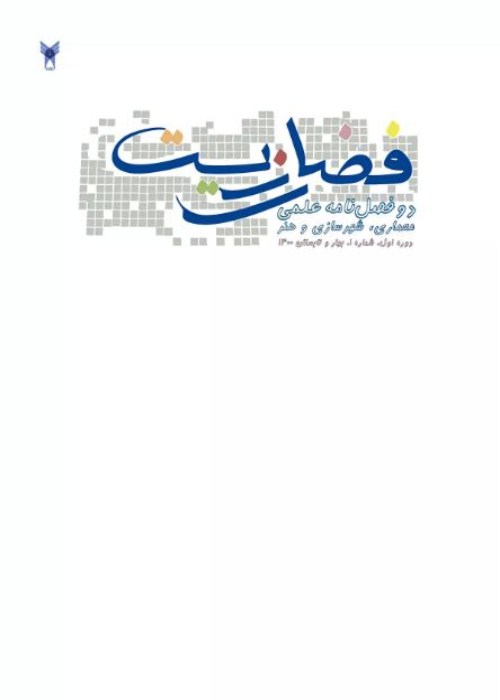Investigating the Effect of Color Factor on Quality of Urban Landscape Central Region of Iran based on Users Ideas (Case Study: Masjed Hakim and MohammadBagher Sadr Axes in Isfahan City)
Colors play an important-effective role to improvement of urban identity, readability of environment, vitality of urban spaces, the sense of place and sense of unity in urban spaces. Today, Iran's urban environments are often deprived of the visual richness of color qualities with incoherent and chaotic combinations and incomplete adaptations of different styles of Western architecture and urban planning, and by transforming the environment into backgrounds in the gray spectrum, lost the color diversity and various functions of this element. While many communities turn the color element into an opportunity to enhance the quality of the urban landscape and use standard color codes to visually enhance the visual quality of buildings, walls, floors, urban furniture and other building elements in their components and totality, But in many cities of Iran, the same element acts as a threat to the urban landscape due to confusion, irregularity and inconsistency in how it is used. Lack of proper use of color element and its related criteria in urban environments, in addition to adverse effects on place construction, reduced sensory richness, degraded place identity and legibility of urban space, in terms of disorders in the objective landscape of the city and adverse psychological effects of presence in such spaces it is also very important. A correct understanding of the capabilities of the color element in increasing the desirability of urban environments is a necessity today in the design of Iranian cities. Unfortunately, the fast growth of urbanization in recent decades, especially in developing countries, has dramatically changed urban perspectives, that it caused there is not enough accuracy in the principles of color using.Today's construction of Iranian cities, which is an uncoordinated and chaotic combination of incomplete adaptations of different styles of Western architecture and urban planning, deprives urban environments of the visual richness of color qualities and turns them into backgrounds in the gray spectrum of color diversity and various functions has strongly influenced the important element. While many communities have turned the color into an opportunity to enhance the quality of the urban landscape and use standard color codes to visually enhance the visual quality of buildings, walls, floors, urban furniture and other building elements in their components and totality. They have given that in many cities of Iran, this element acts as a threat to the urban landscape due to confusion, irregularity and inconsistency in how it is used. Proper use of color and its related criteria in urban environments, increase the sensory richness, enhance the identity of the place and legibility of the urban space, in terms of organizing the objective landscape of the city visual quality and positive psychological effects. A correct understanding of the capabilities of the color in increasing the desirability of urban environments is a necessity today in the design of Iranian cities.The purpose of this research is to provide some criteria for optimal utilization of the potential of the color factor to increasing the utility of urban landscape in according to the user’s expectations. The hypothesis is that the adaptation of color spectra used in urban environments on the color expectations and mindsets of space users is effective in improving the quality and desirability of urban landscape. The method of this research is descriptive-analytic based on a survey strategy and the data are analyzed by quantitative method. In addition to, data collection is done by library and field studies. Statistical calculations are presented in three sections: Determination of sample size, Descriptive section and Inferential section separately. Information was evaluated with using the Excel and Spss software and significance level of 0.05. The research findings were obtained through study of the city context, statistical data as well as comparing and analyzing the color codes and using of internal and external experiences. At the end, the hypothesis have been analyzed and some solutions have been presented for color composition of urban image and landscape based on principles of aesthetics. These findings indicate that according to the religious, cultural and historical background and identity of the study area, those color spectrums that are reminiscent of religious symbols of this area and create a sense of belonging and religious identity among users in space, will have higher qualities.
- حق عضویت دریافتی صرف حمایت از نشریات عضو و نگهداری، تکمیل و توسعه مگیران میشود.
- پرداخت حق اشتراک و دانلود مقالات اجازه بازنشر آن در سایر رسانههای چاپی و دیجیتال را به کاربر نمیدهد.


